'Resilient:' Farmers still recovering 5 years after Hurricane Michael wiped out crops and forests
GREENWOOD AND CLARKSVILLE — Jim Browne, a former fighter pilot who flew combat missions over Afghanistan and Iraq in an F-16, never felt true fear until the day Hurricane Michael laid waste to his timber plantation and countless other farms and forests across North Florida.
The retired Air Force commander, his wife, Alison, his mother, who was 83, huddled with their cat under thick memory foam mattress pads as Michael pounded Fox Pen Farm, their heavily forested property near Clarksville in rural Calhoun County some 70 miles from the coast.
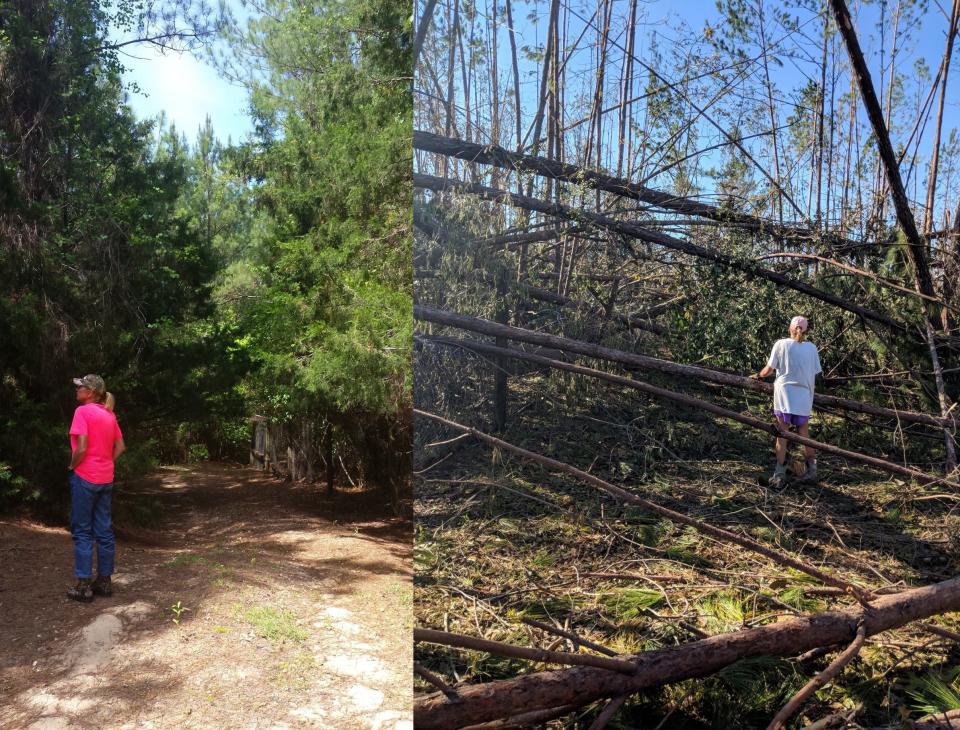
Packing ferocious triple-digit gusts that they could hear coming with a deafening freight-train roar, Michael passed directly over them. The hurricane shook the house so hard they thought it might fly off its foundation and peeled parts of the tin roof off from over their heads. Not far from the house, an unoccupied duplex exploded into pieces.
Alison got a blank stare on her face as Jim wondered whether their plan to hunker down at home would wind up getting them all killed.
“Hurricane Michael was the scariest thing I’ve lived through in my life,” Jim said. “As a fighter pilot, you’re trained and you have control of the situation and you react accordingly. But in Hurricane Michael — absolute loss of control, which is completely frightening."
Tuesday marks five years since Michael, a Category 5 storm with pulverizing 160-mph winds, made landfall just west of Mexico Beach, leveling parts of the coast from Panama City to Port St. Joe and Cape San Blas and cutting a swath of destruction into the central Panhandle.
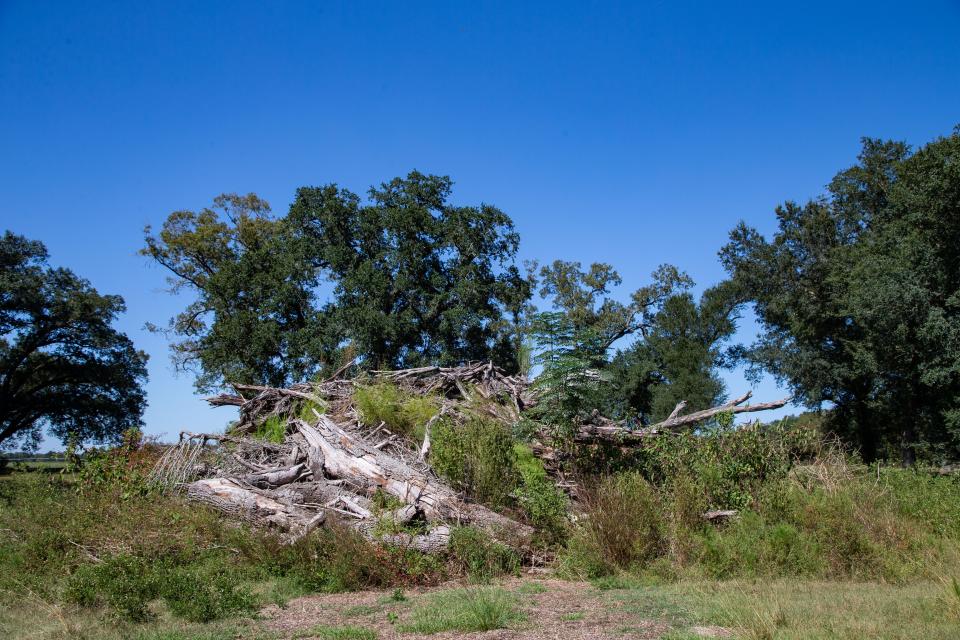
Interactive: Take a virtual tour of Hurricane Michael's arc of ruin through north Florida
The hurricane, one of the strongest in U.S. history, wrecked small inland towns from Blountstown and Bristol to Altha and Marianna, reducing some parts to rubble. It was directly responsible for 16 deaths in the U.S., including seven in Florida from storm surge and falling trees, and at least 43 indirect deaths in the state, according to a 2019 National Hurricane Center report.
Michael delivered a staggering and unprecedented blow to North Florida’s agriculture industry, wiping out acres upon acres of forests and orchards, decimating cotton crops, crippling peanut operations, killing livestock and destroying barns, fences, irrigation pivots and heavy equipment.
“Everything we had was on the ground,” said Jeff Pittman, a fourth-generation farmer in the Lovedale community in Jackson County. “Pivots were down. Cotton was in the trees. Barns were flat. It was a bad day for a lot of people, not just me. But we were fortunate to have survived it.”
'An entire forest is gone'
Post-storm estimates from the state put agriculture losses from Michael at nearly $1.5 billion, with widespread damage and destruction to cotton, cattle, peanuts, poultry, vegetables and other crops. Timber, a key industry in rural North Florida, took the biggest hit by far, with 2.8 million acres of trees damaged and nearly 350,000 acres of productive forests destroyed, representing losses near $1.3 billion.
In a 2021 short film, “Forgotten Storm,” produced by the National Association of State Foresters, Will Leonard, a fifth-generation timber farmer, said Michael destroyed 72 million tons of standing timber, enough to fill 25 million log trucks.
“If you stacked those log trucks end to end, they’d wrap around the earth one and a half times,” Leonard said. “That would be 10 to 15 years worth of wood supply for our local mills destroyed in three and a half to four hours time. Whether you had a lot or a little, if you owned timber, you lost it all.”
Jim and Alison Browne settled in Calhoun County in 2015 after he retired from a 20-year career in the Air Force that included assignments around the world and overseas combat. He’d flown training missions since the late 1980s out of Tyndall Air Force Base — where Michael actually made landfall — later serving as wing commander.
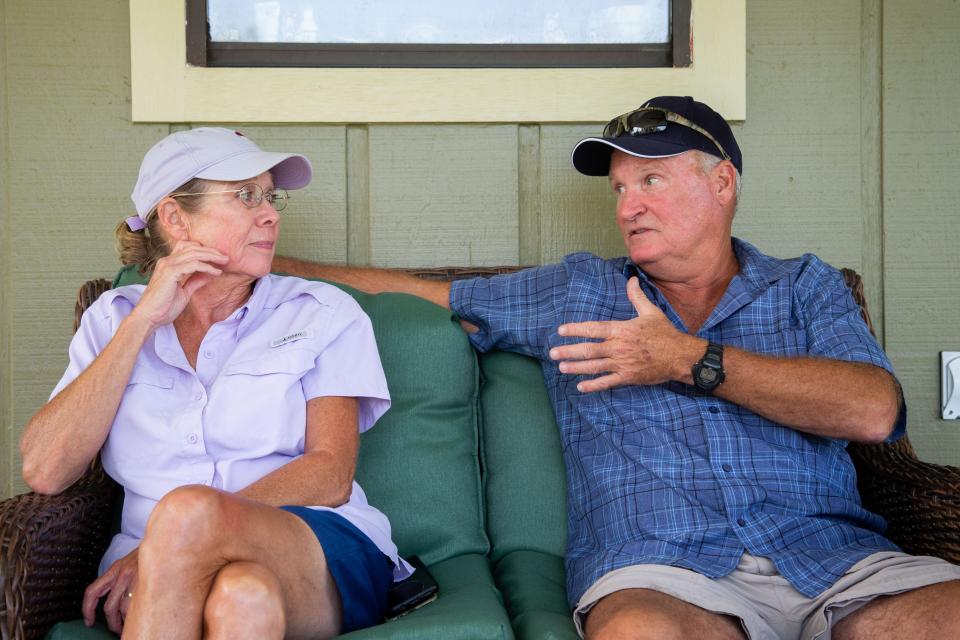
Their 400-acre property had been home to Sand Sifter’s Fox Pen, a once-popular fox hunting plantation that had 90 acres of cut-over timber that needed to be replanted and 68 acres of 30-year-old slash pine that hadn’t been well-maintained. The main compound had a sturdy camp house, which they converted into a residence, nestled beside a pond and framed by an old-growth forest of natural pines and hardwoods.
“We wanted privacy,” he said. “We wanted to do land stewardship. We wanted to be out in the outdoors. When we bought this property, we go, ‘We’re going to be timber people.’ ”
Over the years, they replanted the 90 acres of slash pine with native longleaf, conducted burns on the slash pine, enlarged their ponds, improved their culverts and bridges and planned to build a new house.
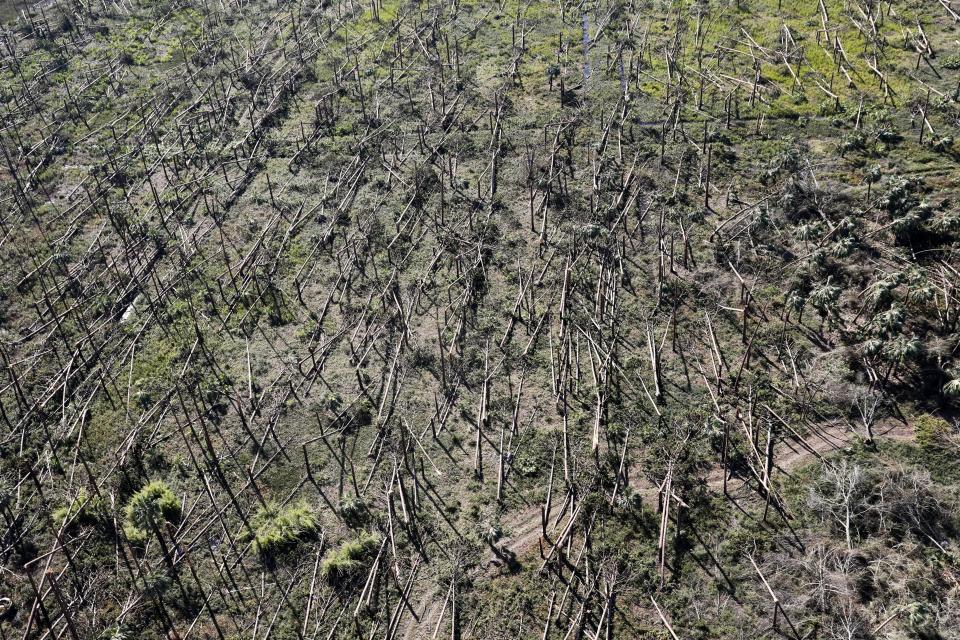
Ahead of landfall, they boarded up the house, leaving a single window uncovered for a porthole. Through blinding wind and rain, they caught glimpses of a landscape that was changing by the second. In one terrible moment, the forest behind the pond vanished before their eyes.
“That wall of beautiful green trees — in one whiteout — I can see an entire forest is gone,” Jim said. “In one blast, the whole thing got wasted. That to us was the most devastating. Those trees had been there 70 years, and we’ll never see them again.”
Michael devastated farms in what would have been a banner year
Before the hurricane came, row-crop farmers in the Panhandle were expecting the best harvest in a lifetime as unusually high cotton and peanut yields happened to coincide with particularly good prices.
Jeff and Ginger Pittman’s JG Farm, located just north of Two Egg on land that’s been in the family since the early 1900s, was averaging 6,000-pound peanut yields and 1,500-pound cotton yields per acre.
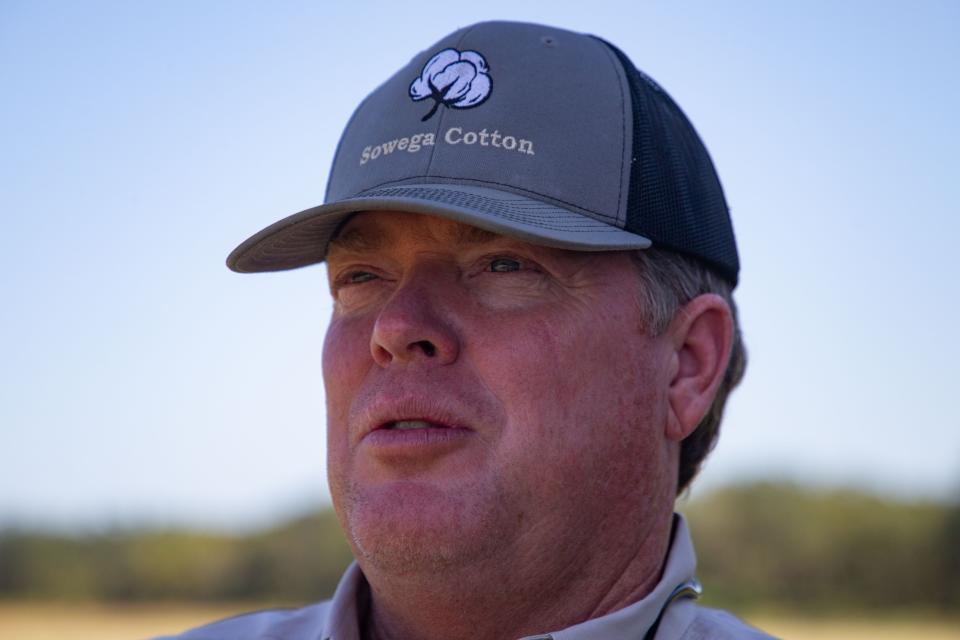
“It wasn’t just my farm,” said Jeff Pittman, president of the Jackson County Farm Bureau. “All my neighboring farms were doing extremely well in yield. We just had a really good production year, weather year, really everything. The stars aligned.”
But the hurricane ruined about a third of the 400 acres of peanuts they’d plowed up — twisting the windrows into an unmanageable mess — and blew the cotton completely out of the burr and onto the ground, destroying the entire crop. Peanut yields dropped more than 30%. Cotton yields fell to zero.
Michael wrecked miles of fences on their farmland, 57 of 70 irrigation pivots, two barns and a drying shed. It claimed a third of their herd of cows, several from fallen trees and about a dozen others that lay down in the days after the storm and never got up again.
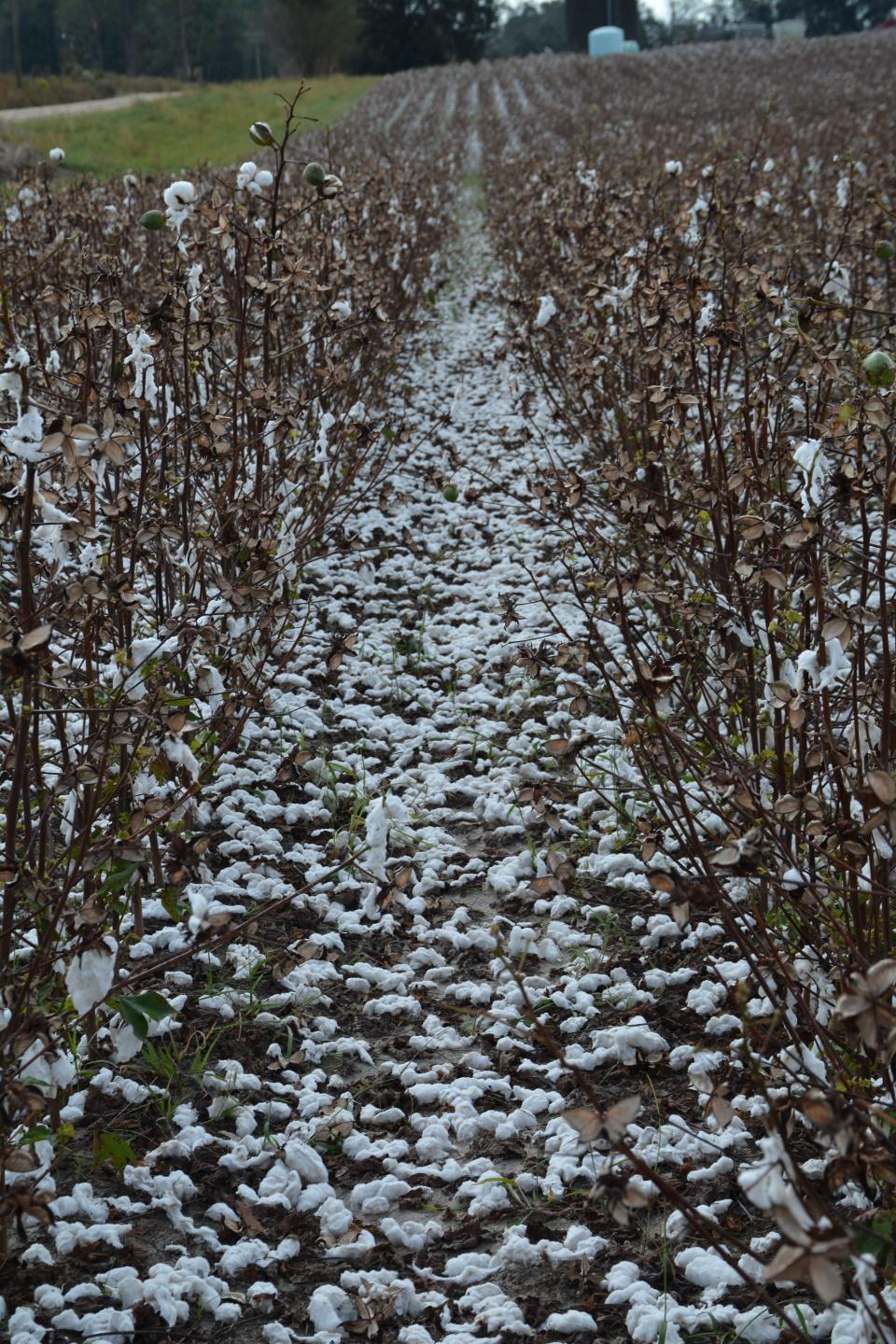
“Usually a cow will back into the wind and just sort of settle down,” Pittman said. “These cows ran the whole time the storm was here. It was so violent. And the (vet) said they just over-exerted themselves.”
Pittman said farmers survived by getting back to work — harvesting what was left of their crops, the only way they could make money — and coming together as a community. Since Michael, farmers, many of whom refinanced to stay afloat, have struggled with rising operating costs amid so-so production.
“We’ve been treading water practically,” Pittman said. “It’s hard to make up that ground when you talk about such a tremendous loss.”
'You put your faith in God'
Larry Ford, a prominent Jackson County farmer and president of Malone Peanuts, said Michael damaged elevators and drying shelters at its Malone facility and destroyed its Dellwood location. The company, which counts Pittman as a stockholder, serves as a buying point between growers and processing firms.
The hurricane destroyed his entire cotton crop, which had been producing 1,700 pounds a day, and leveled 80 acres of nearly 30-year-old pine that was ready to cut. Ford got nothing for the timber. Other timber farmers got mere pennies on the dollar.
“Timber is a slow income deal anyhow when everything’s good,” said Ford, who at 78 has been farming more than half a century. “But what it did, that (acreage) that they had, that they were going to retire on, is gone. If you didn’t have some money to put up somewhere, the other option was to sell the property.”
Ford, like the Pittmans and others, lost fences and irrigation pivots. After the storm, a $750,000 cotton picker burned going through a field of twisted stalks. Five years after the storm, he and others still have debris on their property.
"Within the first year, a lot of things began to come back together," he said. "But everybody had things that were torn up. It was built over time — this, this and this — and it left in about an hour's time. And all of it had to be completely cleaned up, rebuilt or replaced."
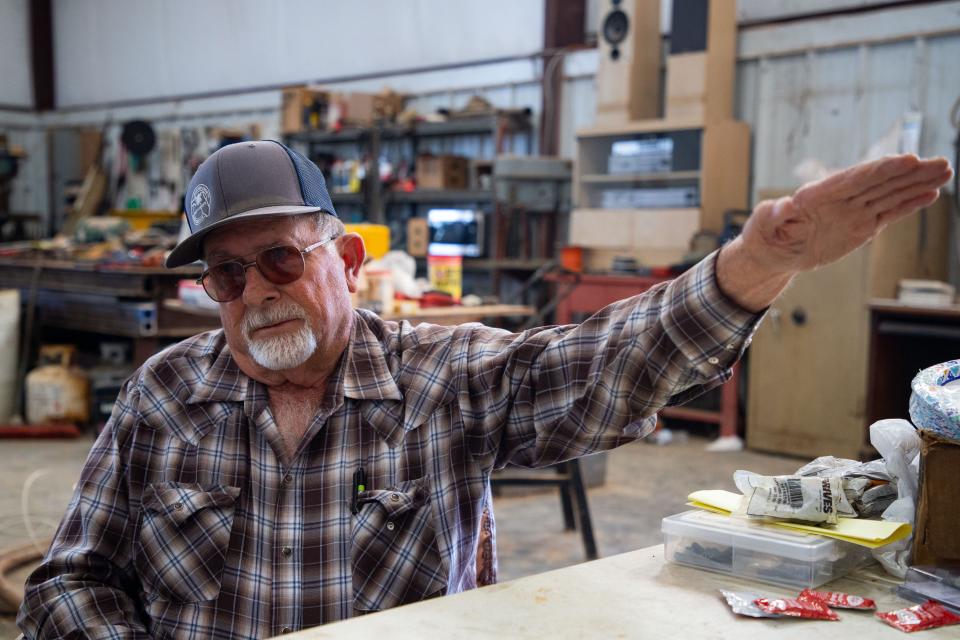
Ford, president of the Florida Peanut Producers Association, said that after Michael, insurance companies helped get money flowing again to damaged farms with government programs kicking in later. He and the Pittmans said the community relied on its own wherewithal and faith to get through the disaster.
“You put your faith in God and it will come out,” said Ford, a Baptist church deacon. “It may not be the way you want it, but it’s the way God wants it. If he takes everything that I’ve got away from me, my soul is in his hands.”
'Right thing to do for the land'
On Fox Pen Farm, where roughly 120 acres of upland forest was destroyed, the Brownes got a major clean-up assist from sawyer teams from the Florida Forest Service that spent four days clearing their access roads.
After that, they got an excavator, a tractor and a chainsaw and began cleaning up themselves, creating more than 350 piles of debris, some as tall as their house, which they’re still burning. The Brownes, who appeared in the "Forgotten Storm" video, also went to Washington to push for first-of-its-kind grant funding to help foresters clean up, which passed as part of the 2019 Disaster Relief Act.
“Our goal is to reforest to help with a number of things — water quality, wildlife habitat and investing in the next generation,” Jim Browne said. “Because these trees, we’ll not see them come to maturity. But it’s the right thing to do for the land.”
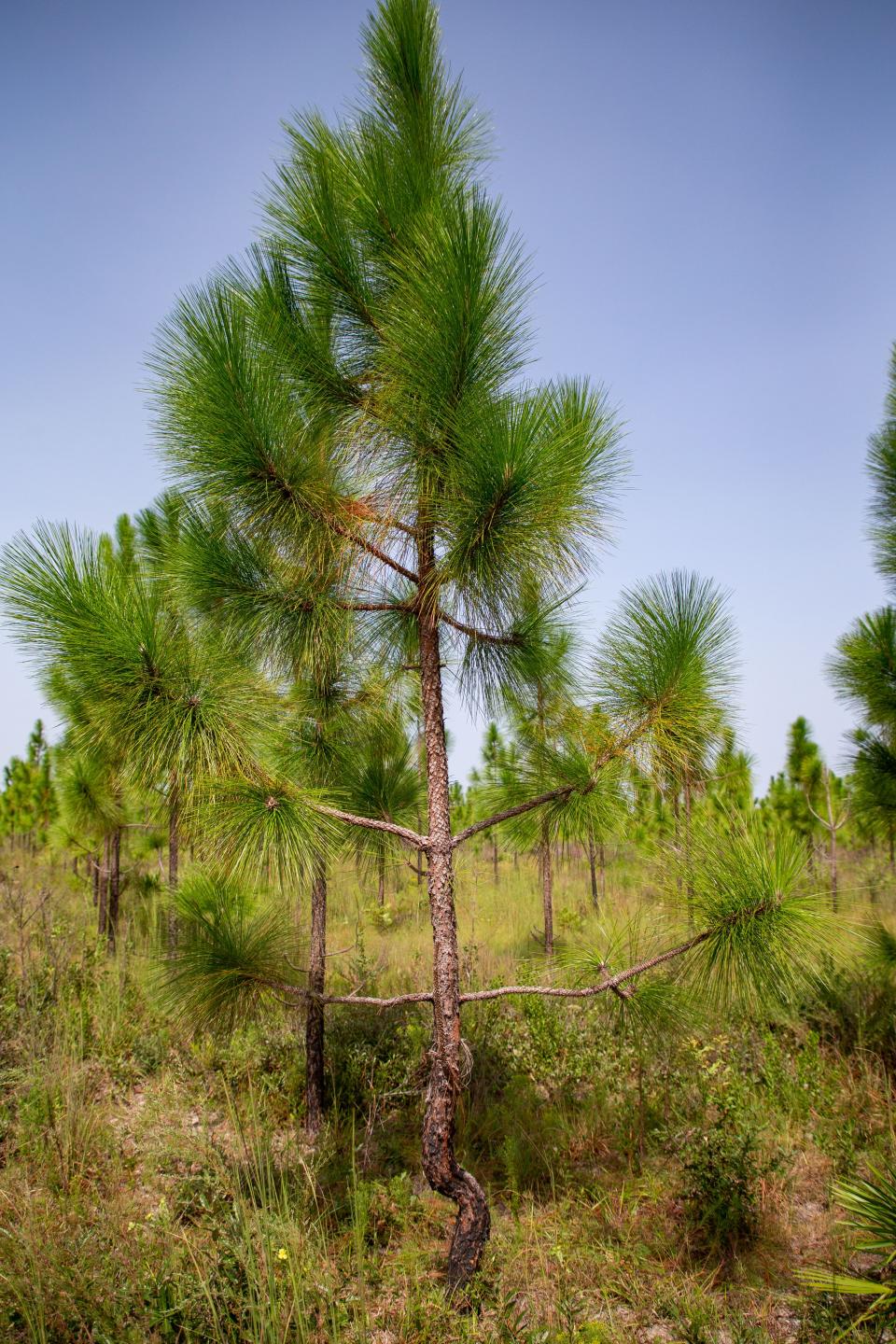
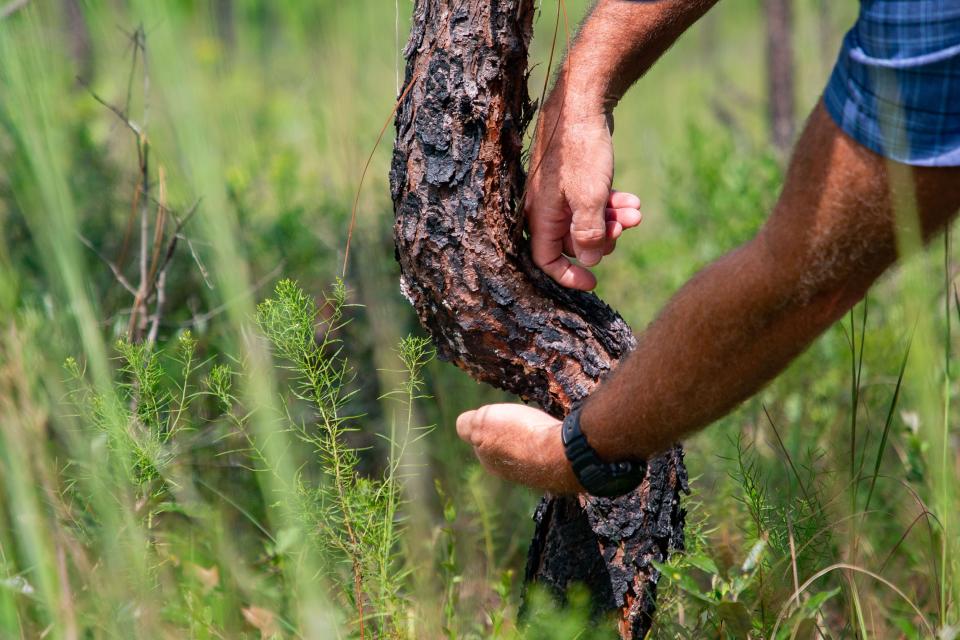
Their longleaf pine forest, which they planted in 2017, largely escaped Michael’s fury. Well after the hurricane passed, the Brownes found one young tree that persevered itself — growing around a branch that had fallen onto it and forming a twist in its trunk.
They hope to tell the story of what they call the “Michael” tree to visiting school children one day. For Alison Browne, the tree, now 18 feet tall, embodies everything that survived the hurricane.
“Resilient,” she said.
Contact Jeff Burlew at jburlew@tallahassee.com or 850-599-2180.
This article originally appeared on Tallahassee Democrat: 'Resilient:' Farmers still recovering 5 years after Hurricane Michael wiped out crops

